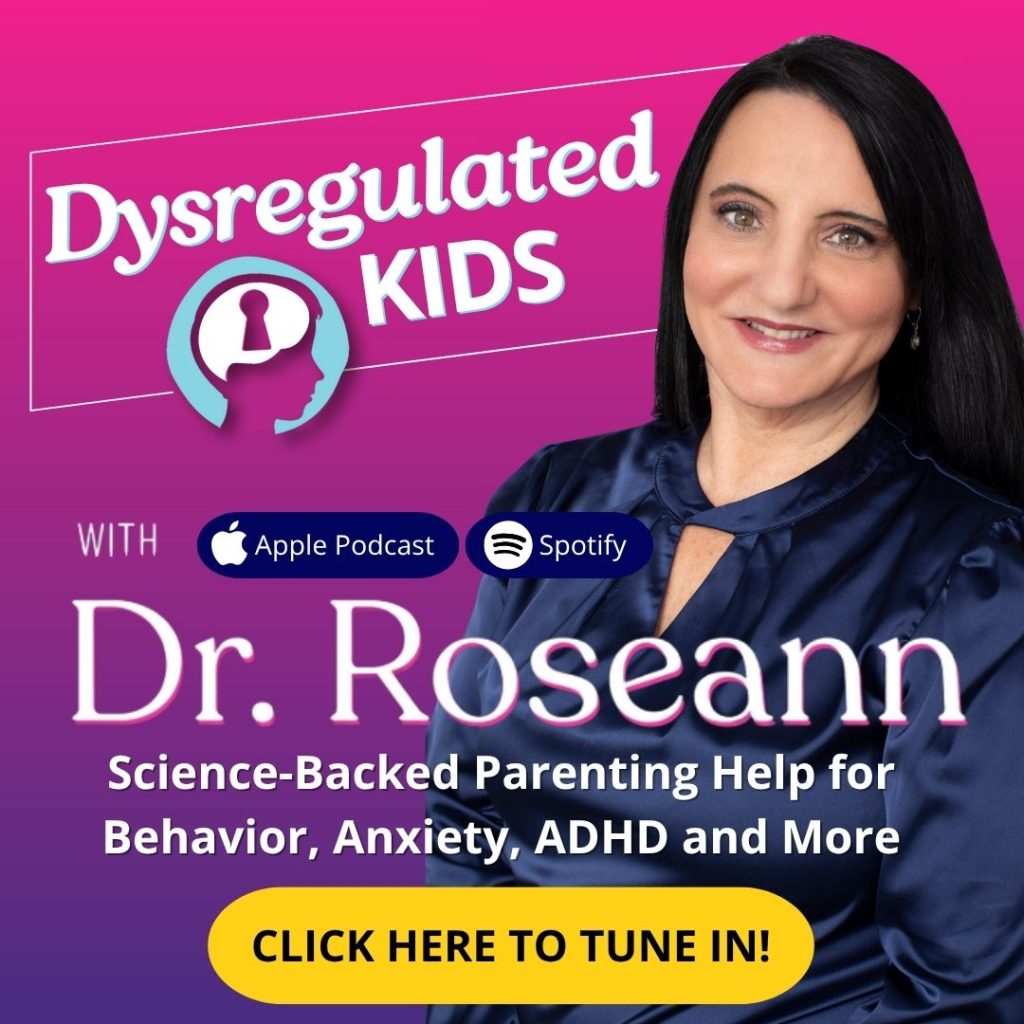Estimated reading time: 7 minutes
Can the timing of meals really affect ADHD and anxiety in kids?
Research shows that structured eating patterns can support natural brain rhythms, improving focus and emotional regulation. For many children, irregular meals may trigger stress on the nervous system, fueling anxiety and meltdowns. In this guide, you’ll learn how meal timing—even approaches like child-safe intermittent fasting—can reduce neuroinflammation, balance neurotransmitters, and boost attention and mood.
What Is Intermittent Fasting and How Does It Benefit the Brain?
Intermittent fasting is an eating pattern that cycles between eating and fasting windows. For children and teens, this is about structure, not strict restriction. We’re simply aligning meals with the body’s natural rhythms so the brain can do maintenance.
Why timing matters: During fasting, the brain can “take out the trash” via autophagy, upregulate BDNF (key for learning/memory), improve mitochondrial function, and reduce neuroinflammation—mechanisms linked to mood and attention.
Key brain benefits of structured eating windows:
- Enhanced neuroplasticity and BDNF for learning/memory
- Better neurotransmitter balance (dopamine, serotonin, GABA)
- Lower neuroinflammation impacting ADHD, anxiety, mood
- More stable brain energy and fewer sugar crashes

Parent story: Miranda set a gentle 12-hour window (7am–7pm) for her 10-year-old with ADHD. Within two weeks, his teacher noted better focus and fewer disruptions. “It felt like his brain could breathe.”
Can Intermittent Fasting Really Help ADHD Symptoms?
ADHD is strongly impacted by dopamine signaling, insulin sensitivity, and neuroinflammation—all influenced by meal timing.
How structured eating supports ADHD brains
- Dopamine optimization: Fasting improves dopamine sensitivity; stable blood sugar prevents the dopamine dips that trigger hyperactivity.
- Insulin sensitivity: Improved insulin function supports steadier attention and mood.
- Reduced inflammation: Periodic fasting activates anti-inflammatory pathways, which can calm behavior.
What many families observe (anecdotally and in emerging research):
- Better attention within weeks
- Fewer hyperactive behaviors and irritability episodes
- Smoother schoolwork transitions and improved follow-through

As Dr. Mark Mattson notes, structured fasting can enhance stress resistance and support neurogenesis in learning/emotional regulation regions.
How Does Meal Timing Affect Anxiety and Emotional Regulation?
Constant grazing keeps the nervous system “on,” driving blood sugar rollercoasters that can worsen anxiety. When blood sugar dips, the body releases cortisol/adrenaline—the same hormones activated in panic.
Why timing calms anxiety:
- Nervous system regulation: Fasting periods enhance parasympathetic “rest-digest” tone and vagal activity.
- Neurotransmitters: GABA rises, serotonin sensitivity improves, cortisol patterns normalize.
- Gut-brain axis: Digestive rest reduces inflammation and improves signaling to the brain.
Want your child to experience better focus and calmer moods—without adding more medications? I created a free resource just for you: the Calm Brain Diet™ Anti-Inflammatory Grocery List.
Inside, you’ll discover exactly which foods support brain health, reduce inflammation, and help regulate mood and attention. It’s the same practical tool I share with families in my clinic, and now it’s yours. Download your copy today and start fueling your child’s brain for calm and focus.
What Are the Cognitive Benefits of Structured Eating Patterns?
Beyond mood and attention, many kids show day-to-day gains in learning, memory, and executive function when meal timing is consistent.
Learning & memory:
- Higher neuroplasticity and BDNF during fasting windows
- Better memory consolidation overnight
- Fewer “brain fog” episodes with stabilized glucose
Executive function:
- Improved planning/organization with steadier brain fuel
- Stronger impulse control as prefrontal cortex efficiency improves
- Smoother task-switching and problem-solving
Neurologist Dr. David Perlmutter observes cognitive gains when kids follow structured eating because the brain finally has metabolic stability to perform complex tasks.
Is Intermittent Fasting Safe for Children and Teens?
Safety first. With kids, we prefer the term structured eating windows and proceed gradually, prioritizing growth, nutrient density, and mental health screening. Partner with your pediatric provider—especially for longer fasts or any medical/mental health concerns.
Safe & Smart Intermittent Fasting Guidelines for Kids
| Age Range | Typical Eating Window | Key Practices | Monitor / Notes |
|---|---|---|---|
| 6–10 | ~12 hours (e.g., 7am–7pm) | Regular meals; no food 2 hrs before bed; nutrient-dense choices | Track growth/sleep; avoid strict fasting |
| 11–14 | ~14 hours (e.g., 9am–7pm) with supervisionLater breakfast or earlier dinner; weekend flexibility | Later breakfast or earlier dinner; weekend flexibility | Monitor mood, energy, growth velocity |
| 15–18 | 14–16 hours only with provider guidance | Time meals around sports/school; protein-forward; hydration/electrolytes | Screen for eating-disorder risk; adjust for athletics/menstrual cycles |
Dr. Roseann’s Therapist Tip
In my 30+ years of clinical practice, I’ve learned that predictable rhythms—not restriction—create calm brains. I tell parents to start with bedtime fasting.
Try this today: Close the kitchen 2 hours before bedtime. Use that window for reading, gentle stretching, or family connection.
Why it works: Late eating disrupts melatonin and forces the body to choose between digestion and overnight brain repair. Aligning meals with circadian rhythm improves sleep, morning focus, and mood—fast.
What Are the Biggest Myths About Intermittent Fasting for Kids?
Myth 1: “Kids must eat every 2 hours.”
Reality: Frequent snacking can dysregulate hunger cues and glucose. Most kids do well with 3 meals + planned snacks.
Myth 2: “Fasting stunts growth.”
Reality: Growth depends on nutrient density, not constant feeding. Structured windows with robust nutrition can support healthy growth.
Myth 3: “Structured eating causes eating disorders.”
Reality: A health-focused, family-led approach often reduces food anxiety. Always screen for risk and keep weight-loss language out of it.
Myth 4: “Kids can’t function without breakfast.”
Reality: Some do better waiting 60–90 minutes. Others need breakfast. Personalize with your provider.

Does Fasting Really Help Anxiety and Depression in Young People?
For adolescents, structured timing may support HPA axis regulation, serotonin/GABA balance, and lower inflammation—mechanisms connected to mood stability.
Neurobiology to know:
- Stress response: More regulated cortisol rhythms = fewer anxious spikes
- Neurotransmitters: Improved serotonin/GABA tone promotes calm and sleep
- Inflammation/Oxidative stress: Downshifted markers can support mood steadiness
Parent story: After three months of structured windows plus therapy, 16-year-old Alex re-engaged in school and activities. “His mood felt supported biochemically—and therapy started to stick.”
How Can Parents Implement Brain-Healthy Eating Patterns Today?
Phase 1: Foundation (Weeks 1–2)
- Set consistent meal windows; close the kitchen 2–3 hours before bed
- Prioritize protein + fiber + healthy fats; hydrate well
- Track sleep, mood, focus (1-minute notes)
Phase 2: Window Refinement (Weeks 3–6)
- Delay breakfast 30–60 minutes weekly (as tolerated)
- Encourage light movement during fasting windows
- Keep provider in the loop; monitor growth/menstrual cycles
Phase 3: Personalization (Weeks 7–12)
- Some kids thrive with longer windows; others need shorter—follow the data
- Flex for sports, parties, holidays; aim for consistency, not perfection
- Celebrate small wins in mood, homework focus, and mornings
Troubleshooting
- “My child gets hangry.” Boost prior-meal protein/healthy fats; consider electrolytes; extend windows gradually.
- “School timing is tough.” Coordinate with counselors; pack brain-healthy snacks; keep weekends consistent.
Brain Science Spotlight
Recent work highlights how structured eating can elevate BDNF—a major driver of neuroplasticity. When the brain gets restorative “off” periods, it engages repair and growth pathways that support attention, memory, and emotion regulation.
What this means for your family: Consistent meal timing may enhance the effects of other supports (sleep, movement, neurofeedback, therapy) because a calmer, well-fueled brain learns better. Behavior is communication—and sometimes it’s the brain asking for rhythm.
Summary & Next Steps
Structured eating windows can boost focus, mood, sleep, and learning by balancing blood sugar, lowering inflammation, and supporting brain growth. Start small, work with your pediatric provider, and always remember: calm the brain first.
👉 Free resource: Download my Calm Brain Diet™ Anti-Inflammatory Grocery List—a simple, parent-friendly guide to the foods that fuel focus, reduce inflammation, and calm your child’s brain. Small, steady shifts at the dinner table can create big changes in mood, attention, and behavior.
FAQs
Can structured eating replace ADHD medication?
No. It can complement care. Any medication changes must be done with your provider.
What’s the youngest age that’s appropriate?
Ages 6+ can benefit from a 12-hour structured window (not strict fasting). Longer fasts should wait until adolescence and require medical guidance.
How do we know it’s working?
Look for steadier mornings, easier homework focus, fewer mood swings, better sleep—and teachers noticing calmer regulation.
What if my child resists?
Go slow, make it family-wide, and frame it as “feeding your brain” rather than restriction. Involve your child in planning.
Citations:
de Cabo, R., Mattson, M. P., & Longo, V. D. (2021). Intermittent fasting and cognitive performance: Targeting brain-derived neurotrophic factor (BDNF) as a potential strategy. Pharmacology & Therapeutics, 223, 107806. https://doi.org/10.1016/j.pharmthera.2021.10780
Lin, C., Zhu, Z., Wu, W., Huang, S., Yang, J., & Guo, C. (2024). Associations of meal timing with depression among children and adolescents: A cross-sectional study in China. The Lancet Regional Health – Western Pacific, 41, 100999. https://doi.org/10.1016/j.lanwpc.2024.100999
Mattson, M. P., Moehl, K., Ghena, N., Schmaedick, M., & Cheng, A. (2018). Intermittent metabolic switching, neuroplasticity, and brain health. Nature Reviews Neuroscience, 19(2), 63–80. https://doi.org/10.1038/nrn.2017.156
Lowe, D. A., Wu, N., Rohdin-Bibby, L., Moore, A. H., Kelly, N., Liu, Y., … Varady, K. A. (2020). Effects of time-restricted eating on weight loss and other metabolic parameters in women and men. JAMA Network Open, 3(10), e2025834. https://doi.org/10.1001/jamanetworkopen.2020.25834
Memon, R. A., Akhtar, M. S., & Ahmed, S. (2024). Intermittent fasting alleviates oxidative stress and modulates neurotransmitter levels in rat brains. Metabolic Brain Disease, 39(4), 1207–1218. https://doi.org/10.1007/s11011-024-01415-7
Always remember… “Calm Brain, Happy Family™”
Disclaimer: This article is not intended to give health advice and it is recommended to consult with a physician before beginning any new wellness regime. *The effectiveness of diagnosis and treatment vary by patient and condition. Dr. Roseann Capanna-Hodge, LLC does not guarantee certain results.
Are you looking for SOLUTIONS for your struggling child or teen?
Dr. Roseann and her team are all about science-backed solutions, so you are in the right place!
©Roseann Capanna-Hodge











